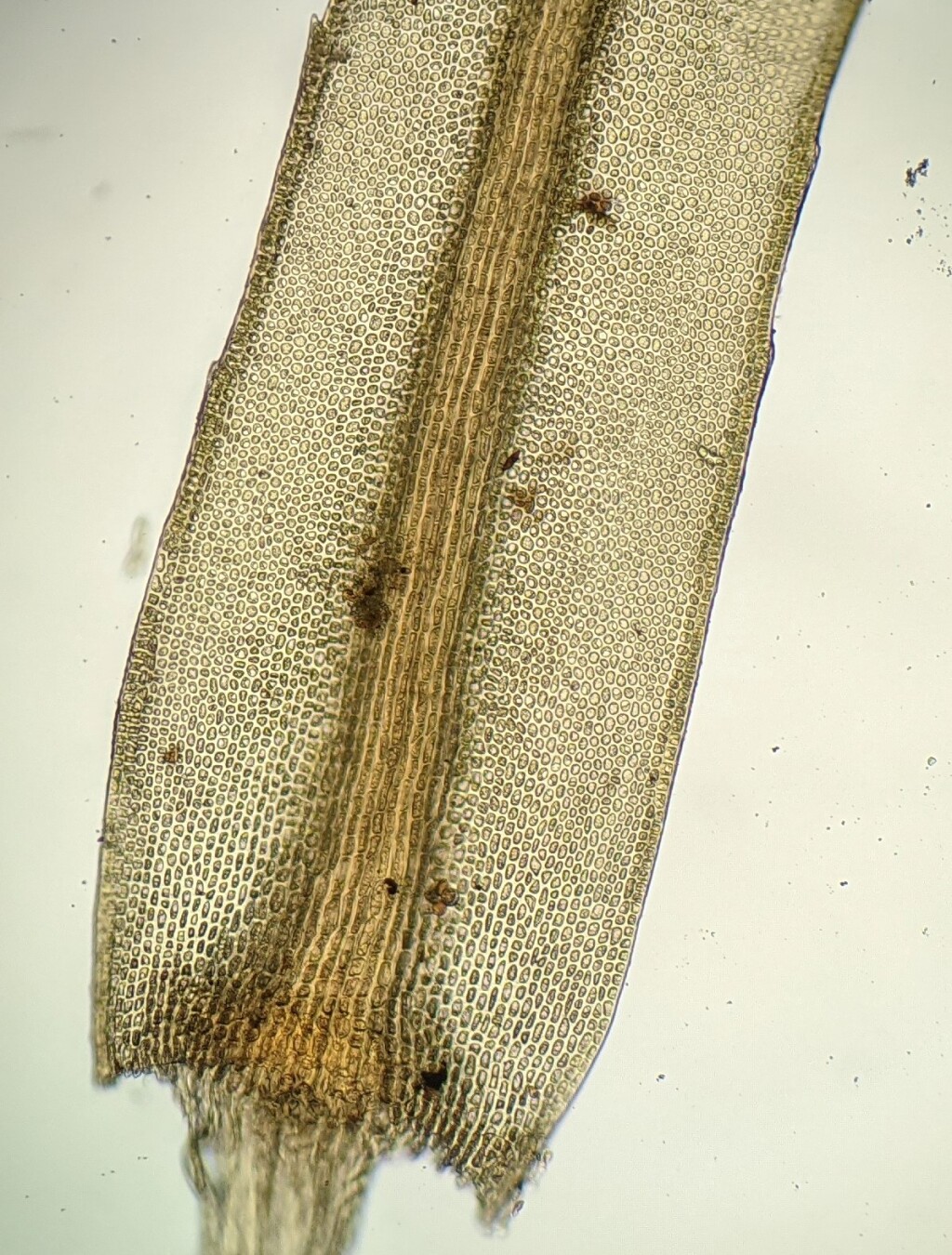Pyrrhobryum paramattense
(Müll.Hal.) ManuelDioicous. Loose or dense tufts on logs and tree trunks, rarely rocks. Stems 1.5–7 cm long. Leaves linear-lanceolate to triangular-lanceolate, often falcate, 3.6–6 mm long, 0.3–0.7 mm wide, flat to slightly concave adaxially, curled and slightly twisted when dry; costa percurrent; apex acuminate, without a hairpoint; margins serrate with single or paired teeth, flat, partially bistratose, without a distinct border; cells mostly close to isodiametric, rounded-oblong, oblate, or subquadrate, 6–15 μm wide. Perichaetia and perigonia basal. Outer perichaetial leaves ovate and abruptly tapering to acute apex, or triangular-lanceolate. Inner perichaetial leaves lanceolate, gradually tapering to a narrow apex; margins singly or doubly serrate. Setae 20–60 mm long, red-brown, smooth. Capsules cylindric to urceolate, inclined, curved; thecae 2.3–2.6 mm long, Operculum c. 1 mm long.
GipP, OtP, CVU, EGL, EGU, WPro, HSF, OtR, HFE. In wet sclerophyll and rainforest in Gippsland and adjoining areas. Also QLD, NSW and Tas. New Zealand.
Phylogenetic analyses of chloroplast DNA sequences from some of the Pyrrhobryum species showed that of the sampled species, P. paramattense was most closely related to P. spiniforme (Bell et al. 2007). The differences between P. paramattense and P. spiniforme are minor and may be better treated as conspecific (Gilmore 2012). A revision that incorporates the similar P. latifolium, previously not included in molecular phylogenetic studies, is required to determine the status of these similar species (Gilmore 2012).
 Spinning
SpinningBell, N.E.; Quandt, D.; O’Brien, T.J.; Newton, A.E. (2007). Taxonomy and phylogeny in the earliest diverging pleurocarps: square holes and bifurcating pegs. The Bryologist 110: 533–560.


